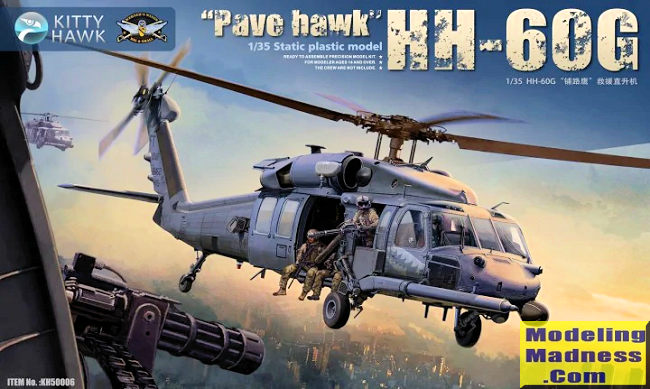
Kitty Hawk 1/35 HH-60G Pave Hawk
| KIT #: | KH 50006 |
| PRICE: | $ |
| DECALS: | Two options |
| REVIEWER: | Scott Van Aken |
| NOTES: | 2019 Boxing |

| HISTORY |
The Sikorsky UH-60 Black Hawk is a four-bladed, twin-engine, medium-lift utility helicopter manufactured by Sikorsky Aircraft. Sikorsky submitted the S-70 design for the United States Army's Utility Tactical Transport Aircraft System (UTTAS) competition in 1972. The Army designated the prototype as the YUH-60A and selected the Black Hawk as the winner of the program in 1976, after a fly-off competition with the Boeing Vertol YUH-61.
Named after the Native American war leader Black Hawk, the UH-60A entered service with the U.S. Army in 1979, to replace the Bell UH-1 Iroquois as the Army's tactical transport helicopter. This was followed by the fielding of electronic warfare and special operations variants of the Black Hawk. Improved UH-60L and UH-60M utility variants have also been developed. Modified versions have also been developed for the U.S. Navy, Air Force, and Coast Guard. In addition to U.S. Army use, the UH-60 family has been exported to several nations. Black Hawks have served in combat during conflicts in Grenada, Panama, Iraq, Somalia, the Balkans, Afghanistan, and other areas in the Middle East.
The Sikorsky MH-60G/HH-60G Pave Hawk is a twin-turboshaft engine helicopter in service with the United States Air Force. It is a derivative of the UH-60 Black Hawk and incorporates the US Air Force PAVE electronic systems program. The HH-60/MH-60 is a member of the Sikorsky S-70 family.
The MH-60G Pave Hawk's primary mission is insertion and recovery of special operations personnel, while the HH-60G Pave Hawk's core mission is recovery of personnel under hostile conditions, including combat search and rescue. Both versions conduct day or night operations into hostile environments. Because of its versatility, the HH-60G may also perform peacetime operations such as civil search and rescue, emergency aeromedical evacuation (MEDEVAC), disaster relief, international aid and counter-drug activities. The only other nation to use the HH-60G is South Korea.
| THE KIT |
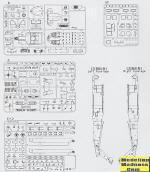 The
first thing one notices about this kit is that it comes in a huge box. In line
with the H-6 kits, it is also 1/35 scale to fit in well with armor modelers. I'm
pretty much an aircraft modeler and find that it matters no
The
first thing one notices about this kit is that it comes in a huge box. In line
with the H-6 kits, it is also 1/35 scale to fit in well with armor modelers. I'm
pretty much an aircraft modeler and find that it matters no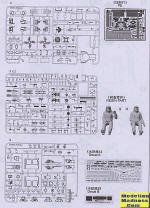 t if the kit is 1/35
or 1/32 when it comes to subjects of this size.
t if the kit is 1/35
or 1/32 when it comes to subjects of this size.
Reading over the instructions, I noticed that these pretty much make sense, unlike the previous UH-60 kit. The sequence flows well and starts you off with the cockpit. Then it goes to the cabin, which, unless you add the optional pair of GAU-21 machine guns, will be fairly empty. Really, for a SAR helo, there should not be a bunch of additional guns getting in the way of the SAR crewmen. An additional fuel cell with its piping fits up against the rear bulkhead.
Once the cockpit and cabin area are done, the overhead
and small interior side panels will close it up. Construction then moves to
building the two engines and all the various bits that will fit in the upper
fairing. You can have the various covers open if you so wish. This includes the
disco lights
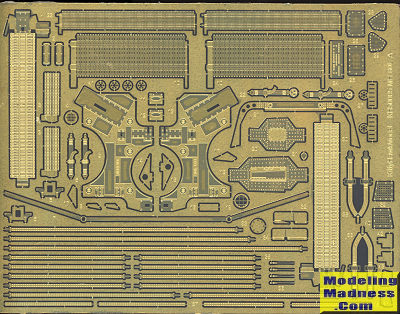 and other antennas. Then the rotor head is constructed along with
the blades and installed in the upper fairing. It is only now that the various
holes are opened in the fuselage halves and those then trap the cockpit/cabin
assembly along with the tail gear.
and other antennas. Then the rotor head is constructed along with
the blades and installed in the upper fairing. It is only now that the various
holes are opened in the fuselage halves and those then trap the cockpit/cabin
assembly along with the tail gear.
The rest of the build sequence then focuses on all the external parts that include the nose assembly, doors, and tail bits. This includes the tail rotor. Note that you have two different clear pieces that you can put into the cockpit doors. Other exterior parts are the clear bits, rescue hoist, landing gear and the long refueling probe. One then builds up and attaches the two door gun machine gun assemblies. Much of the photo etch will be used for this area. This p.e. set is identical to the one in the UH-60L kit, though it doesn't include the dozens of seat belts as there are no seats in the cabin. The last thing is the upper power fairing. If you do use the GAU-21 gun assembly, it would be best to install this earlier, though it is the last set of build instructions that are provided.
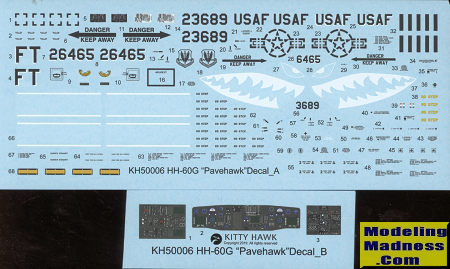 You are provided with two resin air crew figures for the front seat. Two
markings options are provided. One is the box art plane with a shark mouth and
painted in the current grey scheme. This one has FT tail codes. The other is a
rather generic aircraft in the older Euro 1 scheme. I would be surprised if you
don't see an aftermarket sheet for this kit in the near future. Decals are very nicely printed and if
like other Kitty Hawk decals are incredibly thin so care will be needed in their
application. The decal selection includes instrument panel and console decals.
You are provided with two resin air crew figures for the front seat. Two
markings options are provided. One is the box art plane with a shark mouth and
painted in the current grey scheme. This one has FT tail codes. The other is a
rather generic aircraft in the older Euro 1 scheme. I would be surprised if you
don't see an aftermarket sheet for this kit in the near future. Decals are very nicely printed and if
like other Kitty Hawk decals are incredibly thin so care will be needed in their
application. The decal selection includes instrument panel and console decals.
| CONCLUSIONS |
In terms of detail and in being up to date, this one beats the Academy kit. Of course all that detail comes with a price, that being increased complexity in the build. However, this seems to be the way most modelers want it and I have to say that those wanting a modern Pave Hawk need look no farther than this kit.
| REFERENCES |
https://en.wikipedia.org/wiki/Sikorsky_HH-60_Pave_Hawk
September 2019 Copyright ModelingMadness.com.
All rights reserved. Thanks to Kitty Hawk and Glen Coleman for the preview
kit. If you would like your product reviewed fairly and
fairly quickly, please
contact
the editor
or see other details in the
Note to
Contributors.
Back to the Main Page
Back to the Review
Index Page
Back to the Previews Index Page